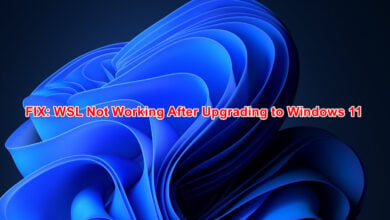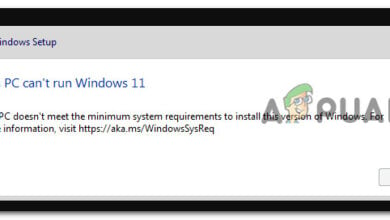How to Fix Hyper-V Virtual Machine Stuck in Stopping State
The use of virtual machines has increased dramatically in recent times. This is only natural when you put into consideration the advantages of them. Hyper-V is a Windows native virtualization software that lets you create virtual machines on your Windows system. Although it does not provide as many features as compared to VMware or VirtualBox, it is still used quite a lot. Just like any other software, it has its own share of problems. One of the problems that often is faced by various users is when the virtual machine gets stuck in the stopping state.

When this happens, the virtual machine refuses to stop, and thus, it can’t be started which isn’t something you want. This can happen due to a number of reasons that we will mention down below. However, before we begin, it is important to mention that, at times, the issue is simply caused by an outdated Windows host machine. Therefore, before you start off with this article, make sure that you have installed all of the Windows updates available. With that said, let us get started.
- Storage Failure — As it turns out, in some cases the issue can be caused by a storage failure. This happens when the disk is being reported as missing in which case what you will have to do is power off the host as well as the other disks. Once you boot it up again, it should recognize the disk and, in case of any issues, start repairing them if you have a RAID system in place.
- RRAS Misconfiguration — Another cause of the issue can be the misconfiguration of the Routing and Remote Access Service. This can happen when an interface in your environment messes up the configuration of the RRAS. In such a scenario, you will have to disable the service to resolve the issue.
- Windows Power Options — The power options of your Windows host machine can also trigger such an issue. It turns out that if you have the screen set to turn off the display after a certain time, it can result in a VM getting stuck. In such a scenario, you will have to set it to never turn off the display.
Now that we are done with the possible causes of the issue, let us get started with the methods through which you can get your virtual machine back up again.
Method 1: Kill the Virtual Machine
By killing, we don’t mean to completely get rid of the virtual machine. Rather, it means to end the process of the virtual machine that is stuck and so that you can start it up normally again. This is a rather simple process if you have a single virtual machine running on the host machine. If you do, you can skip through some of the steps that we are going to list down below which helps in finding the GUID of the problematic virtual machine.
In case you have multiple virtual machines, you can’t just simply kill the Virtual Machine Worker Process or vmwp.exe without knowing the GUID of the stuck virtual machine as the process appears multiple times in Task Manager. Once you have the GUID, you can find the process corresponding to that ID and kill it without any worries.
Follow the instructions below to do this:
- First of all, to find out the GUID of your virtual machines, open up Powershell. If you have a single virtual machine, you can skip this step and just simply kill the process. Similarly, if you know the GUID of the machine, you can skip this step as well.
- Once you have opened up the Powershell, type the following command where VMname is the name of the problematic virtual machine:
Get-VM "VMname" | fl *
- Note down the VMId as you will need this while finding the right process to end.
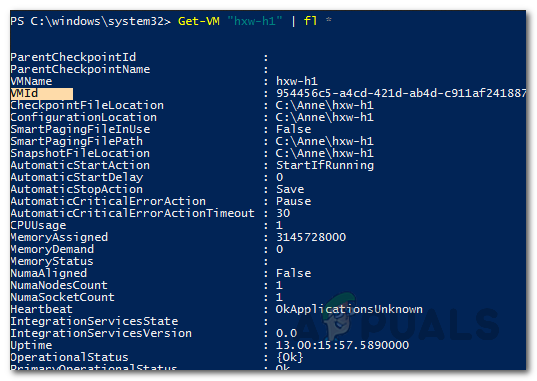
Finding VMId - After that, go ahead and open up the Task Manager by right-clicking the taskbar and selecting Task Manager from the menu that appears.
- Once the Task Manager opens up, switch to the Details tab.
- Now, locate the vmpw.exe process by pressing the V button. You will find multiple processes if you have multiple VMs running.
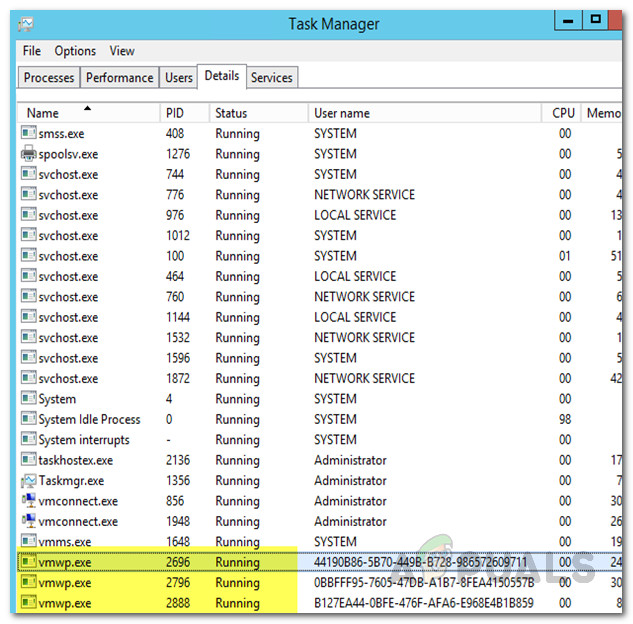
Virtual Machine Worker Process - Use the ID that you found earlier to find the right process.
- Finally, highlight the process whose User name correlates with the ID and then press the End Task button.
Method 2: Change Power Options
As it turns out, the power options of your host Windows machine can also affect the state of your Hyper-V virtual machines. One of the facing the same problem said that changing the display to never turn off fixed the problem for them. Thus, it is worth a shot. Here’s how to do it:
- Open up the Start menu by pressing the Windows key and then search for Power Plan.
- Press Enter on the result shown.
- From there, change the Turn off the display option to Never from the drop-down menu.

Power Plan Options - Finally, click the Save changes button.
Method 3: Disable RRAS
A misconfigured remote access service can also result in the issue. As we have mentioned earlier, your network interface might be messing up the service which causes the virtual machine to get stuck. Therefore, an easy way of fixing this would be to disable the Routing and Remote Access service. Here’s how to do it:
- First of all, open up the Run dialog box by pressing the Windows key + R.
- In the Run dialog box, type services.msc and then press Enter.
- In the Services window, search for the Routing and Remote Access Service. To do this easily, press the R button once to jump to the services starting from the alphabet R.
- Once located, double-click on the service to open up the Properties window.
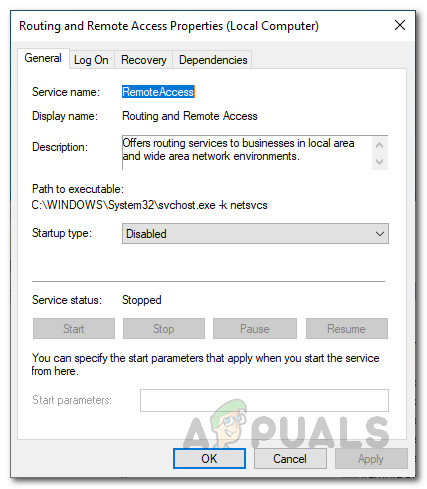
RRAS Service - If the service is running, stop it by clicking the Stop button.
- After the service has been stopped, choose Disabled from the Startup type drop-down menu.
- Reboot the system.
Method 4: Reboot the Host Machine
In most cases, an issue as such can be easily resolved by simply rehosting the host machine. Once you have rebooted the host machine, the VM will clear out and start normally. Also, make sure that your system is up to date as the issue might also be caused by a Windows bug which is often patched in the follow-up updates.




